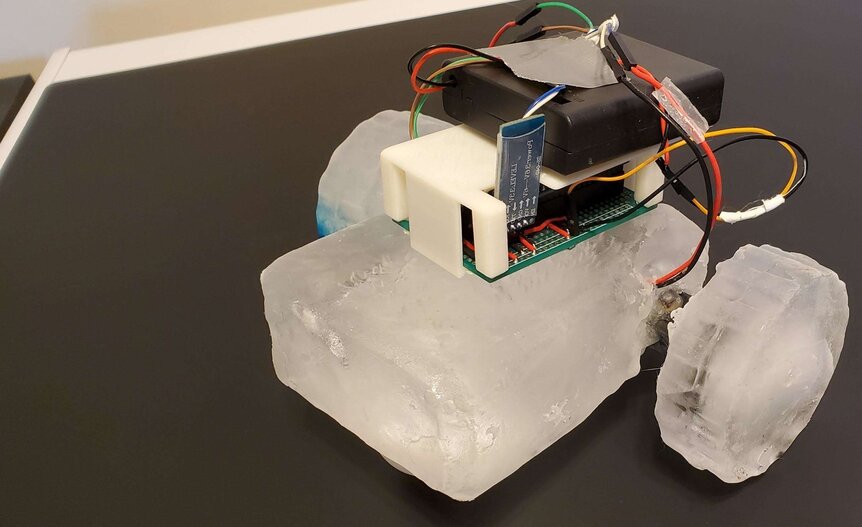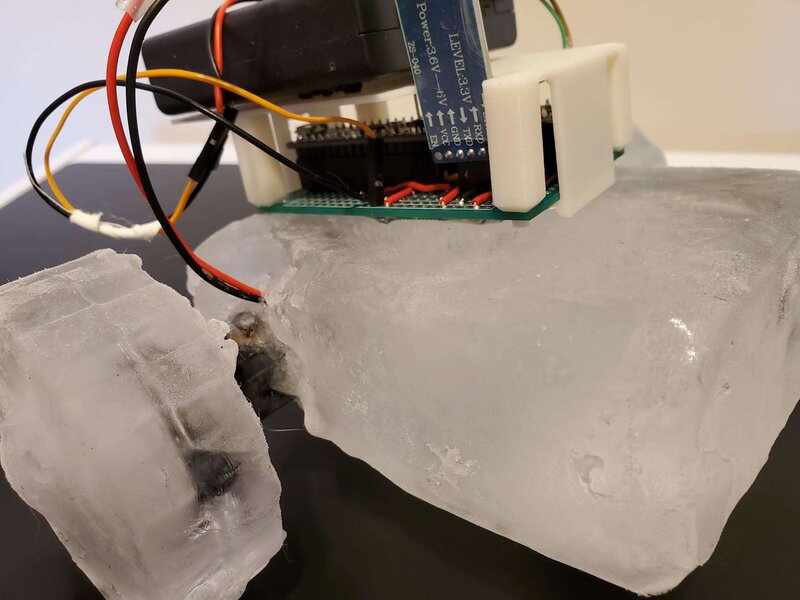Create a free profile to get unlimited access to exclusive videos, sweepstakes, and more!
Stay frosty! Scientists hope to send cool ice robots to frozen exoplanets

Sure, we've seen the scuttling ice spiders in The Mandalorian, ETH Zurich's amazing ice-skating robot, and even the homicidal ice-cavern robot named Box in the classic sci-fi thriller, Logan's Run. But space-born robots made of ice sent to explore other worlds? That's something we'd love to see!
The execution of this IceBot idea might not be exactly what we conjure up in our imaginative minds, but the chilly concept definitely has merit.
In a new study delivered to the IEEE/RSJ International Conference on Intelligent Robots and Systems (IROS), scientists Devin Carroll and Mark Yim from the University of Pennsylvania's GRASP Lab have put forth a proposal to send robots partially made of frozen H2O to icy exoplanets, where they can make use of local resources to self-fix in the event of a breakdown.
Their intriguing paper examines various methods of manufacturing robotic structural components from ice by employing additive and subtractive manufacturing processes, with the endgame of developing a proof-of-concept for robots that can display “self-reconfiguration, self-replication, and self-repair.”
Obviously components like actuators and batteries would still be composed of conventional materials, with only structural parts crafted of ice.
Check out the team's experimental prototype in the video below. Their frosty IceBot vehicle tips the scales at a beefy 14 pounds, but it was adept at crawling up a 2.5 degree hill with ease while swerving left and right.
"One of the challenges to making robots for this field is not only are robots expensive but the natural elements will break them given time," lead author and UPenn robotics researcher Devin Carroll told IEEE Spectrum. "Mark and I started exploring the idea of building robots from found material as a way to add robustness to robotic systems operating in remote or hostile environments with a secondary goal of reducing the cost of the system. We ultimately settled on ice because of the design flexibility it affords us and the current interest in icy, remote environments.
“Climate change has many folks interested in the Antarctic and ice sheets while NASA and other space exploration groups are looking to the stars for ice and water. If we could build a robot from ice, perhaps it could be used to assist in exploring icy planets for life and data collection.”
Though far from bringing this wintry machine to full fruition, Carroll envisions an Earth-bound arctic or planetary exploration robot that includes self-modification or repair capabilities within a system using two types of robots. The first one explores the environment and gathers materials needed to perform self-augmentation or repair, and the second is a type of manipulator/manufacturing system.
"We can envision the exploration class of robot returning to a centralized location with a request for a plow or some other augmentation and the manufacturing system will be able to attach the augmentation directly to the robot," he adds. "Similarly with repair—if, for example, a robot recognizes a crack, the manipulator would be able to patch the crack using an ice band-aid of sorts, sealing the crack and preventing it from propagating further."
Ice is an extremely malleable material and could be used to great advantage in hazardous environments where intrepid robots conduct tests and observe alien worlds. Of course, we all know what happened to Frosty the Snowman when the sun was hot that day.
"I would argue this hasn't been done before because of the uncertainty that using ice brings," Carroll notes. "Unlike traditional building material, the designer does not know a priori what conditions will cause the ice to fail—we can make an educated guess, but the margin for error is much higher."




























